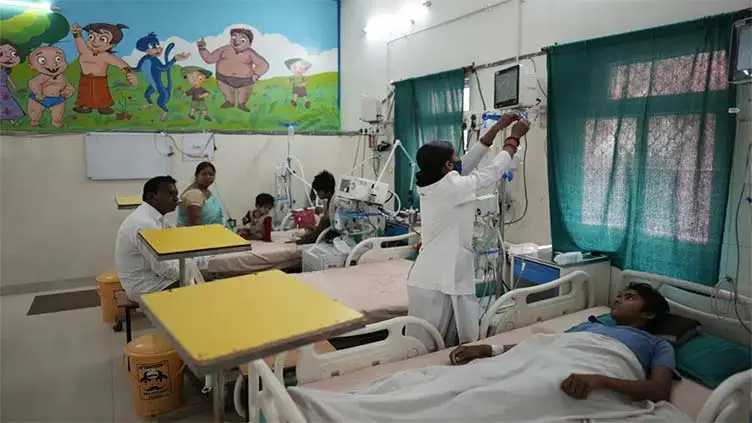BENGALURU (India) March 29, 2023: With temperatures set to soar next month, Indian authorities need more resources and better preparation to deal with searing heat particularly for the most vulnerable communities around the country, a New Delhi-based think tank said.
Analyzing 37 regional and federal heat action plans, the Centre for Policy Research found this week that the plans are not updated regularly, don’t have separate budgets in most cases, have no legal support to implement them and the most vulnerable populations in any given region are not identified in the plans.
Heat plans started springing up around the nation after blistering heat waves surpassing 48 degrees Celsius (118 degrees Fahrenheit) in 2010 killed over 800 people in the northwestern city of Ahmedabad. City authorities and other organizations swiftly pulled together South Asia’s first-ever response plan to protect communities through initiatives like awareness programs, specialized training for health care professionals and installing roofs made of cooling materials like coconut husks and paper waste.
Several other heat plans have been drawn up since at the state and federal levels.
“India has made considerable progress by creating several dozen heat action plans in the last decade. But our assessment reveals several gaps that must be filled in future plans,” said Aditya Pillai, an associate fellow at CPR and co-author of the report.
Unlike with other disasters like cyclones, it is still unclear who should fund and implement heat action plans, said Abhiyant Tiwari, lead of the climate resilience and health program in India for the Natural Resources Defense Council.
“Funding for heat plans is the elephant in the room,” he said. “While the Indian government is cognizant of the threat of extreme heat, it will definitely help if the issues this report flags are also addressed,” such as how vulnerable communities can be better protected.
At least 26,000 people have died due to heat in the last 30 year in India alone, according to a recent report. Residents of urban slums, people with longstanding health issues, older or pregnant people, workers in small, enclosed spaces, farmers and construction workers are among the most vulnerable.
Sizzling temperatures and heat waves are becoming more common as the planet warms up as humans pump more greenhouse gases into the atmosphere, scientists say. Increasing humidity, another consequence of human-caused climate change, is particularly dangerous in southern India, where relatively lower temperatures can be fatal in moist air.
A 2021 report found that India will also likely lose the most work hours in the world, greater than 100 billion hours every year, as a result of scorching heat. Most current heat plans do factor in economic and climate concerns.
Pillai called for changes to the heat response, such as labelling heat waves as disasters, regularly monitoring and evaluating heat action plans, establishing laws that implement the plans and ensuring that they have enough funding.
He said there is a “solid foundation” but changes need to happen immediately to prevent any more major loss of life.
“A lot more needs to be done,” said Pillai.

